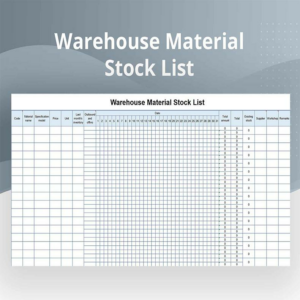The systematic presentation of photographic services enhances transparency, mitigating potential misunderstandings regarding the scope of work and associated costs. By providing a comprehensive overview of available options, clients are empowered to select a service level tailored to their specific needs, avoiding the acquisition of unnecessary add-ons. Furthermore, it provides a framework for photographers to manage their workflow and pricing strategies efficiently.
list
Wedding Photo Price List Template
Utilizing a pre-designed framework for this document offers several advantages. It ensures consistency in presentation, projecting a professional image. Furthermore, it streamlines the pricing process, saving time and reducing the potential for errors or omissions. A well-structured document facilitates client understanding, minimizing confusion and potentially preventing disputes regarding pricing expectations.
Wedding Party Guest List Template
Employing such a structured framework offers numerous advantages. It streamlines the invitation process, minimizes errors, and allows for efficient communication with individuals attending the ceremony and reception. This, in turn, contributes to a smoother and less stressful planning experience for the couple and their families. Furthermore, it aids in staying within budget constraints and fulfilling obligations to vendors and venues.
Wedding Guest Seating List Template
Employing a pre-formatted structure offers numerous advantages. It streamlines the arrangement process, saving time and minimizing potential errors. Furthermore, it aids in strategically grouping individuals with common interests, potentially enhancing social interaction and overall enjoyment of the celebration. This organized approach contributes to a more seamless and enjoyable reception experience for both the wedding party and the invited guests.
Wedding Guest List Template Numbers
The use of digital tools provides several advantages in compiling and managing attendee data. Automated calculations can instantly reflect changes in attendance, providing real-time budget updates. Categorization features allow for efficient segmentation of invitees, aiding in seating arrangements and personalized communication. Accessible digital platforms promote collaborative planning among involved parties.
Wedding Guest List Template Black And White
Employing such a resource streamlines the guest management process, mitigating potential errors and oversights. Its utility extends to facilitating accurate tracking of responses, dietary requirements, and seating arrangements. Furthermore, the understated visual aesthetic often associated with these documents contributes to a sense of elegance and formality, mirroring the overall tone of the occasion. Utilizing this resource improves efficiency and ensures comprehensive management of attendee-related details.
Wedding Gift Wish List Template
Utilizing such a structured list offers several advantages. It ensures that the couple receives items they genuinely want and can use, contributing to their household setup. For guests, it simplifies the gift-giving process, removing the stress of choosing a present that might not be appreciated or suitable. The list also promotes coordination among guests, preventing multiple purchases of the same item.
Wedding Day Contact List Template
Utilizing such a resource offers numerous advantages. It streamlines communication by providing readily available contact details, reducing the potential for delays or miscommunication. Furthermore, it empowers designated individuals to address unforeseen circumstances promptly, ensuring that the event proceeds according to plan. A well-organized list also contributes to a sense of order and control, minimizing stress for the wedding couple and their immediate families.
Website Sign Up List Template
Employing a pre-designed structure for this data collection process offers several advantages. It promotes consistency in data acquisition, ensuring all necessary information is captured uniformly. Efficiency is also enhanced, as the prepared format reduces the time and effort required for both the website owner and the visitor completing the form. Further, this approach aids in maintaining a professional image for the website, projecting an organized and reliable presence to potential subscribers.
Warehouse To Do List Template
Employing such a standardized procedure yields significant advantages, including enhanced task management, improved team coordination, and reduction in operational errors. It facilitates consistent adherence to safety protocols, streamlines inventory tracking, and ultimately contributes to better resource allocation and cost control within the facility. It helps in keeping track of tasks and provides accountability.









